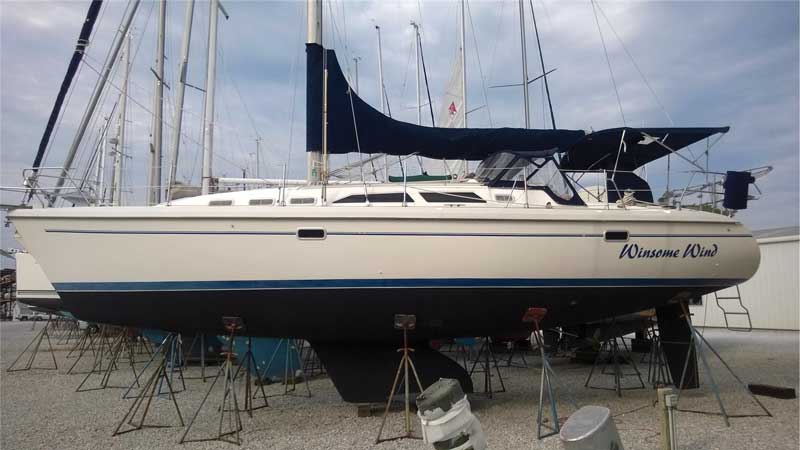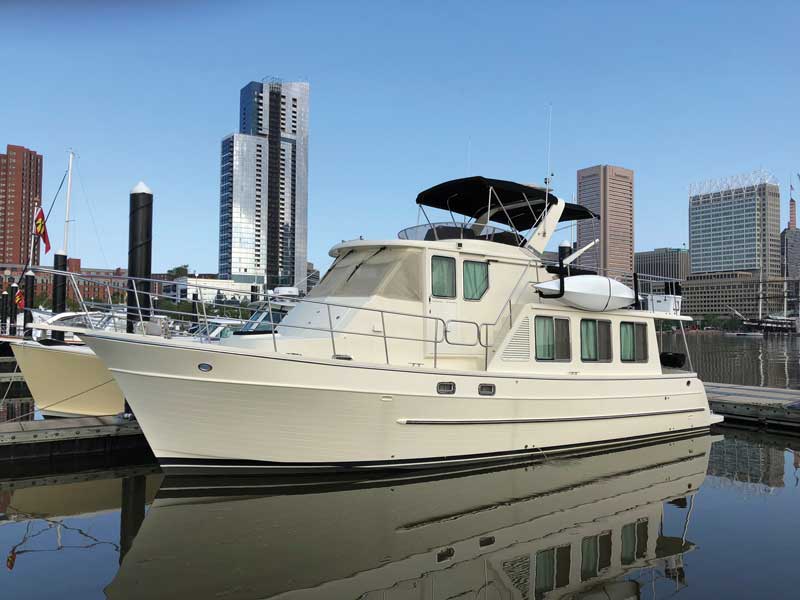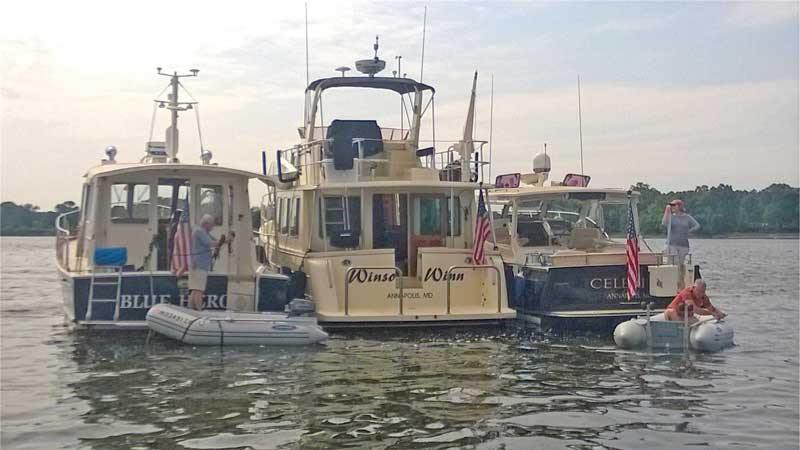It happens. In fact, it generally seems inevitable. No, this is not a story about the two oft quoted and now classic certainties in life: death and taxes. It is about a boat owner’s near certain life transition: sail to power.

Let’s face it, there are few among us who buy, live with, and eventually sell just one boat. Most of us can’t even practice serial monogamy when it comes to boat ownership, let alone a life commitment to just one hull. To understand the sail to power move, you need to recognize that “move-up-itis” is the gateway drug to the eventual transition.
I have had the pleasure and pain of owning three successively larger cruising sailboats (a 27, 32, and 38 foot). Move-up-itis was easy to accept as the family, our destinations, and our pocketbook grew over time. And let’s be honest, the moves to larger boats were not just about space, but also amenities like pressure water, hot water, showers separate from the head, air conditioning, cooking aboard conveniences, and even quiet inverter power.
The switch from sail to power is, in so many ways, a part of that “upgrade” path. Maybe it is a generator you covet. It could be inside steering that keeps you out of the elements and extends the boating season. Most likely it is this, and more, that drives you from copious amounts of Dacron to copious amounts of diesel.
Let’s examine the “more.”

By 2014 my wife, Sue, and I had owned our latest move-up sailboat, a Catalina 380, for nine years. We bought her as the kids went off to college. She was our “empty nest” boat, and we cruised the Chesapeake extensively from Norfolk to the C&D Canal. Well, perhaps I should say that we cruised the Bay as extensively as two professional careers would allow. Weekends and a couple of weeks on the boat in the summer were our limit.
That year, our vision of a future boat (rule number one: there is always some vision of a future boat) was influenced by retirement planning. It would be several years before we realized actual retirement, but planners we are! And so casual conversations evolved into more pointed discussions about what and how we would use a future boat.
For us, the “what and how” was travel up and down the ICW, to include winters on the boat in south Florida. ICW travel had been a bucket list item for me since I lived on a houseboat for a couple of years, fresh out of grad school. Among the top 10 blessings in my life was surely Sue’s adoption of that dream (I did after all meet her while living on the houseboat).
Rule number two: sailors converting to power do not usually jump too far. A bigger engine and no sails are a big enough jump. Sailors come to the powerboat market with a respect for a graceful sheer, functionality, and economy. They typically want a little more comfort and a little more speed. They seldom jump from a six-knot sailor to a 30-knot speedster, nor from 30-footer to 50-footer. A trawler is often the first target.

For our transition to be, there were a few other requirements. We wanted to be out of the elements as we moved south on the ICW in cooler weather. We wanted to have big windows to the world, at least the world of the marina, after so many years in the “cave-like” main salon of a sailboat. We wanted to be able to work some from the boat. We wanted a solid guest room. We wanted a socially friendly back porch (aft cockpit) and an entertaining deck (expansive flybridge).
So, we searched and learned about trawlers. As we did, we edited our list of needs. The (re)search lasted almost a year. We looked at a lot of trawlers. On a trip to Seattle, we took the opportunity to see a couple trawlers of interest, both 38 feet. At one stop the tour guide was also the president of the company, Trevor Brice, of North Pacific Yachts. After viewing his 38-foot model, Trevor showed us his popular 43-foot model.
After that, every boat was compared to the North Pacific 43. None really compared favorably. Not long after our visit to Seattle we had a slightly used North Pacific 43 under contract.
So, what about you dear reader? Are you reading PropTalk to learn about powerboats? Do not resist the inevitable! Admit you are hooked. It is indeed the first step to redemption.
As you look, I encourage you not to be swayed by a pretty face. Boat porn can be ever so dangerous while also being ever so useful. Know your budget. Do your homework. Fully understand why you are ready to switch and dig into how you will use the boat and where you will use it before you fully address the specifics of what you will buy. Sure, a pretty blue hull with a nice sheer is enticing. But does it have a galley that meets your long term needs and a separate shower? Let me put it another way. The boat that briefly but fully catches your eye may indeed NOT be the boat you want to bring home and introduce to mom.

Ask yourself if you will cruise farther than you do today? How far? How long? The duration of a cruise and the waters to be covered lead in certain directions. Will you cross oceans or just bays? Will you live aboard for months or just weeks? What you can live with for a couple of weeks will become a major drawback to longer term life aboard. If you take your time, are honest with your answers, and do your homework, you will be happy with the outcome.
A move from sail to power is indeed a life transition. There is a driver, a motivator signaling the change. You should be forewarned that this transition boat may not be the last boat (back to that monogamy thing).
After five years with the North Pacific 43, during which time we put 10,000 miles under the keel and lived on her three winters in Florida, we sold her. We bought a condo and a smaller cruising boat, a Legacy 32.
It may be that I was not taking my own counsel on that move. The boat was great, the condo maybe not so much. After just over two years and maybe 4000 miles under the Legacy keel, we sold her and the condo. We did our homework again and bought a Back Cove 37, even before closing on the sale of the Legacy 32 and the condo. The Back Cove, ours for less than a year, has already been to New England and is now at rest in south Florida as our winter home.
We are still making little liveaboard tweaks and enjoying the warm south Florida winter. She could be our last boat… maybe.
By Mike Pitchford